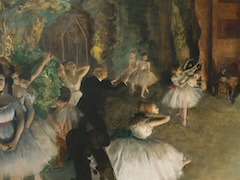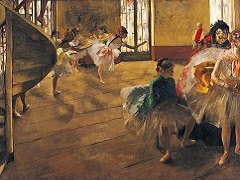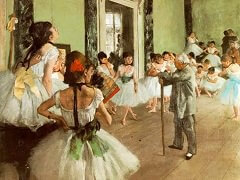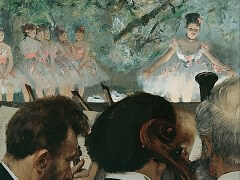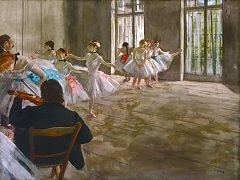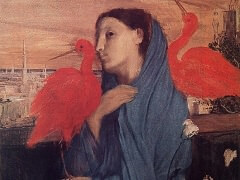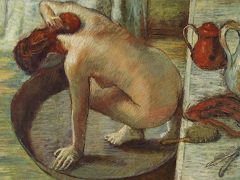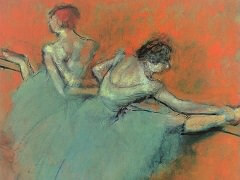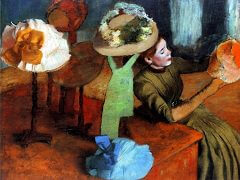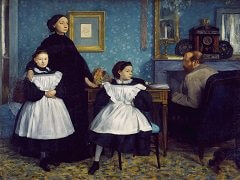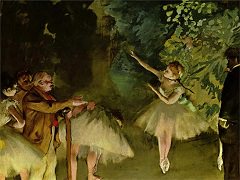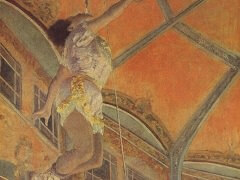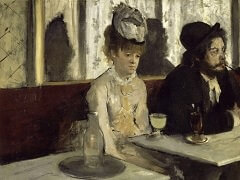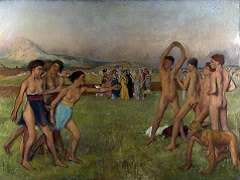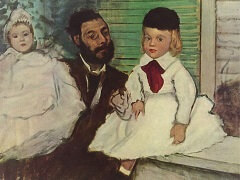Portrait after a Costume Ball, 1877 by Edgar Degas
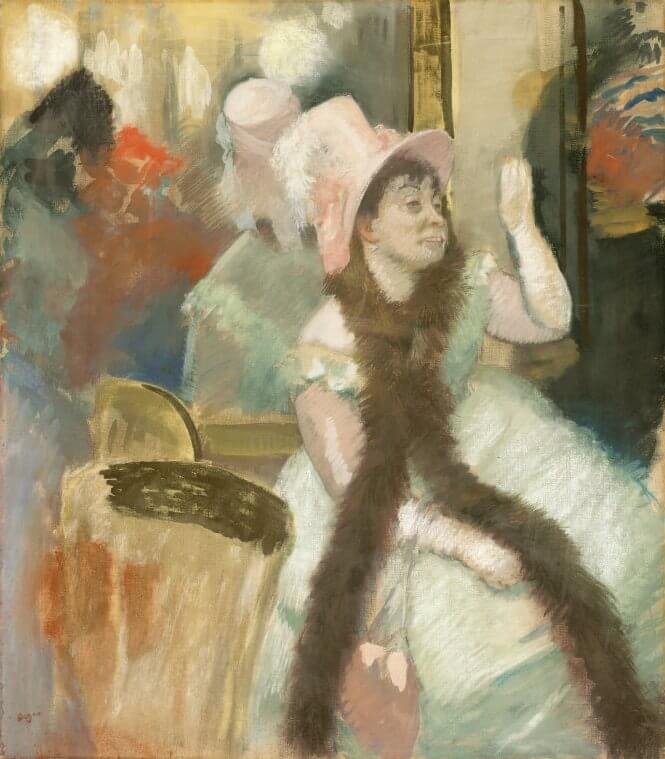
Degas created Portrait after a Costume Ball in 1877. In discussing this painting, art historians have often focused on the relationship between Edgar Degas and his subject, Adde Dietz-Monnin, wife of a prominent French businessman and politician. It is clear from a letter to Mine. Dietz-Monnin, which Degas probably never sent, that difficulties arose between them in the course of painting the portrait. According to family tradition, she rejected the portrait because she thought it made her look drunk or like a prostitute. The portrait seems to have been originally intended as a form of payment for money lent to Degas by members of her family. Although areas of the portrait have a sketchy quality, Degas considered the painting sufficiently finished to sign it and submit it to the 1879 Impressionist Exhibition under the title Portrait apres un bal costume (Portrait after a Costume Ball).
Whatever the precise nature of the disagreement between the artist and his subject - information about the circumstances surrounding the portrait remains insufficient to reach firm conclusions - this painting in many respects exemplifies the kind of subject drawn from modern life that inspired so many of Degas's best works. As is typical of him, the sitter is shown in an unguarded moment. There is a spontaneous, utterly unposed quality to her expression and posture that belies the many studies (several survive) and sittings that undoubtedly preceded it, as well as the carefully calculated decision to show the woman at this particular moment of the evening's event and in "costume" rather than street clothes.
With great originality, Degas chose to focus on the complex moment of transition from a highly public event, the costume ball, back to private life. Without embellishment and sentimentality, he captured the tired expression on the woman's face, the exhaustion underlying the perfunctory smile and listless wave of the hand, [and] the relaxation of her public persona as her shoulders slump and her whole body sinks wearily into a chair.

